
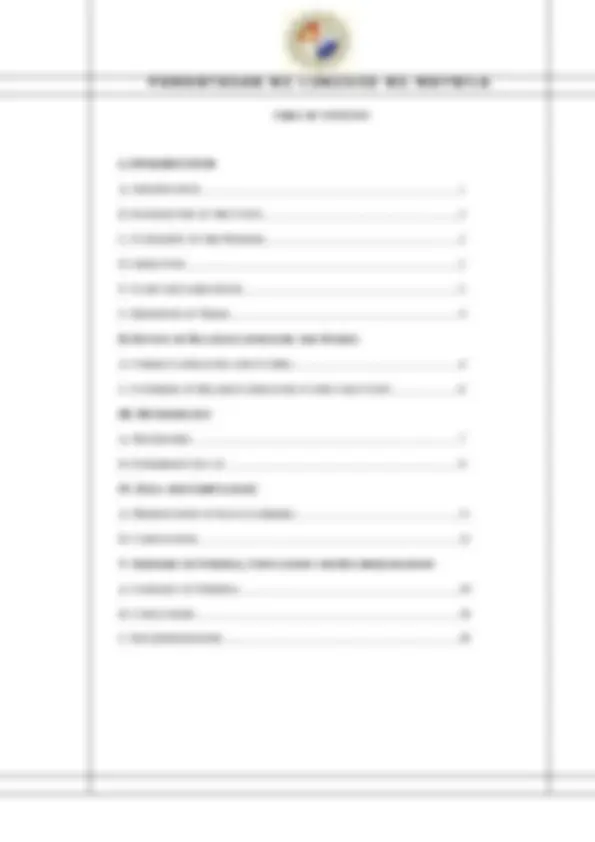


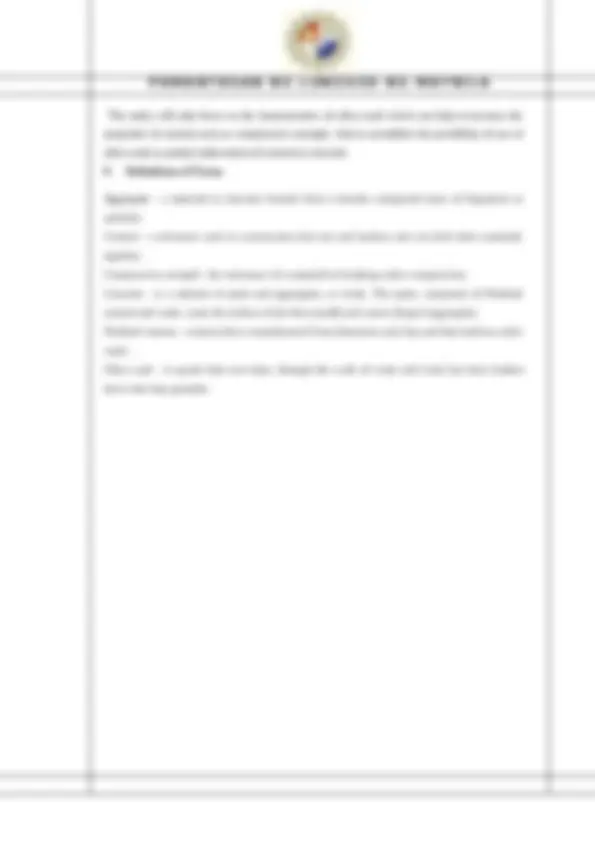
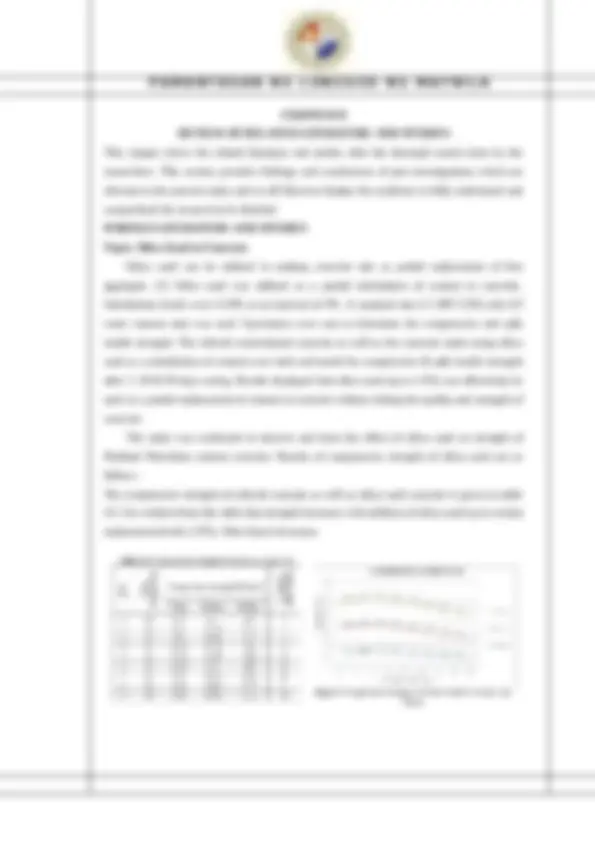
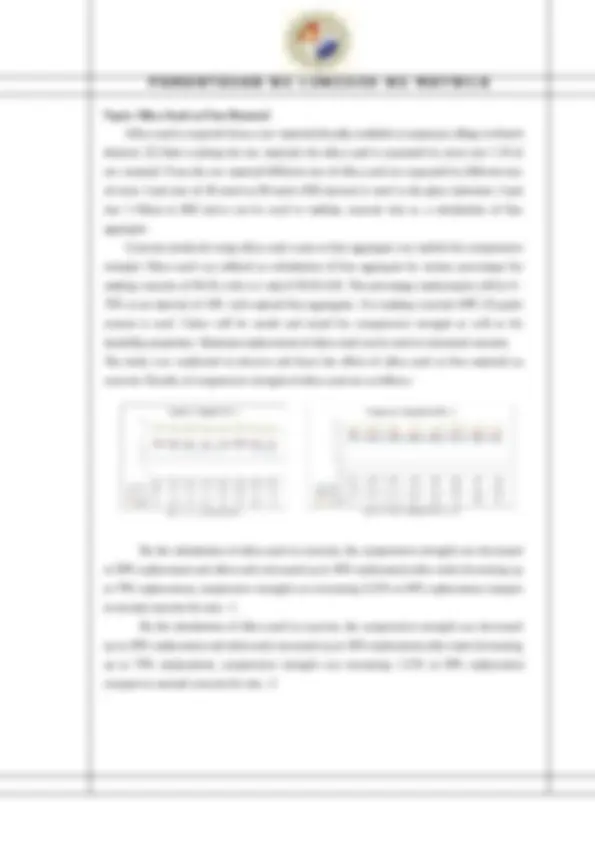
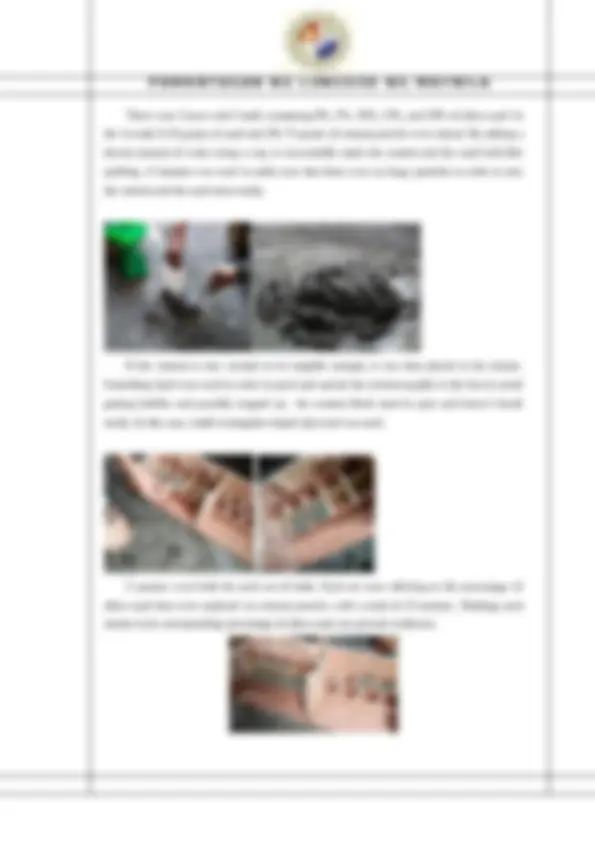
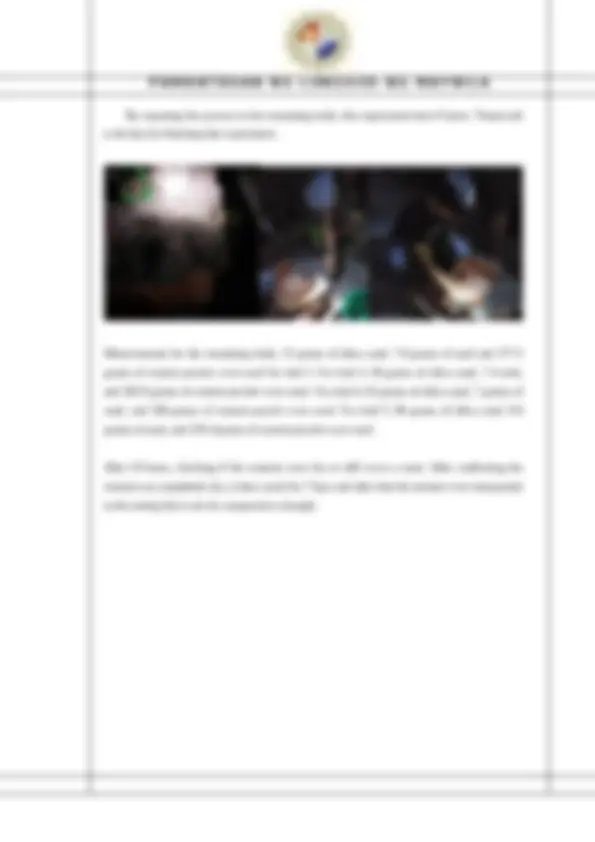

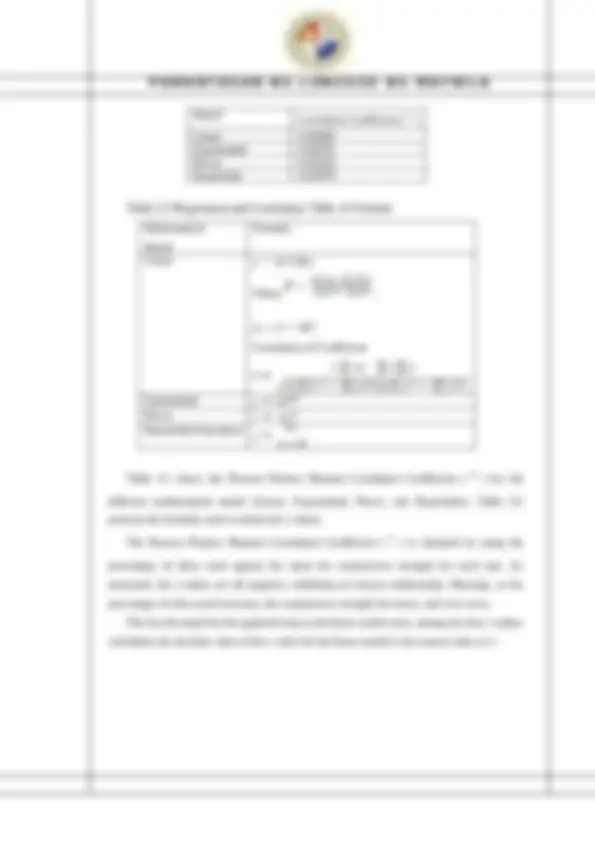
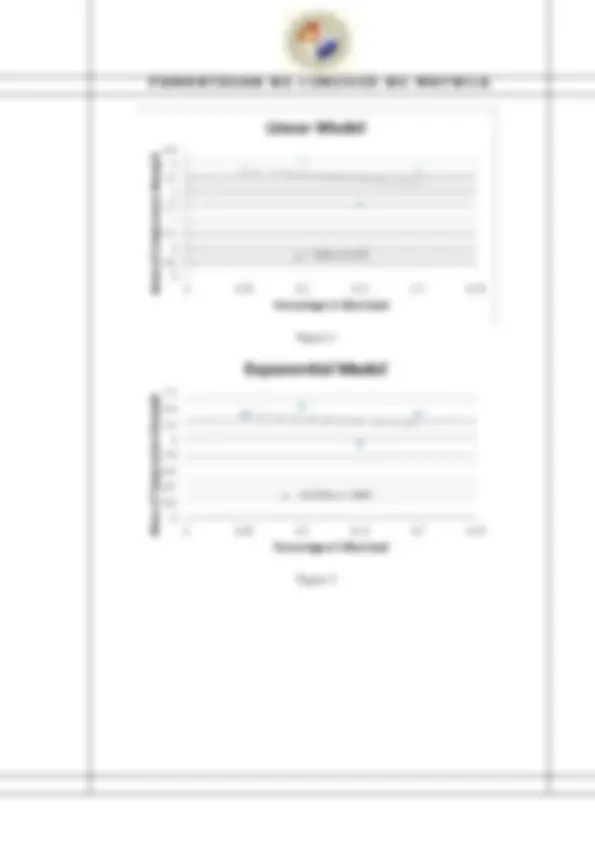
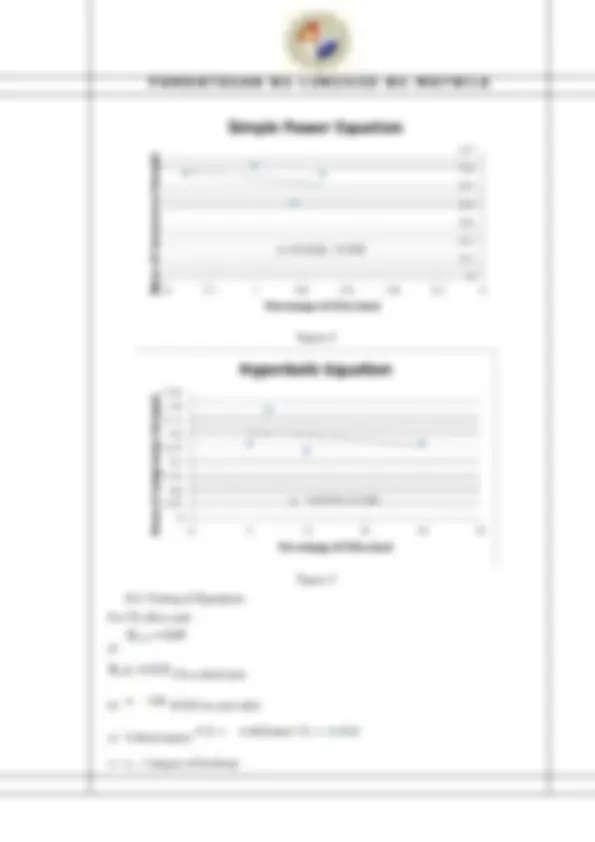
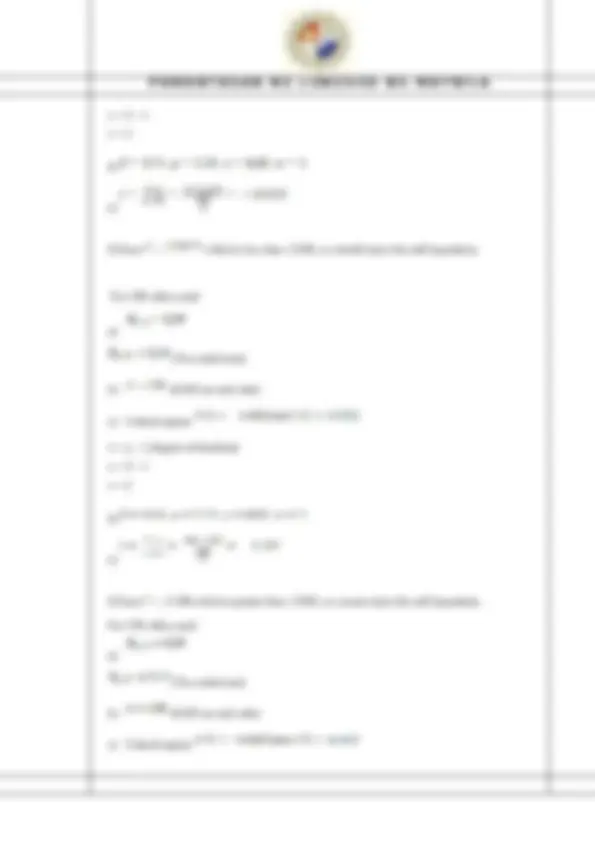
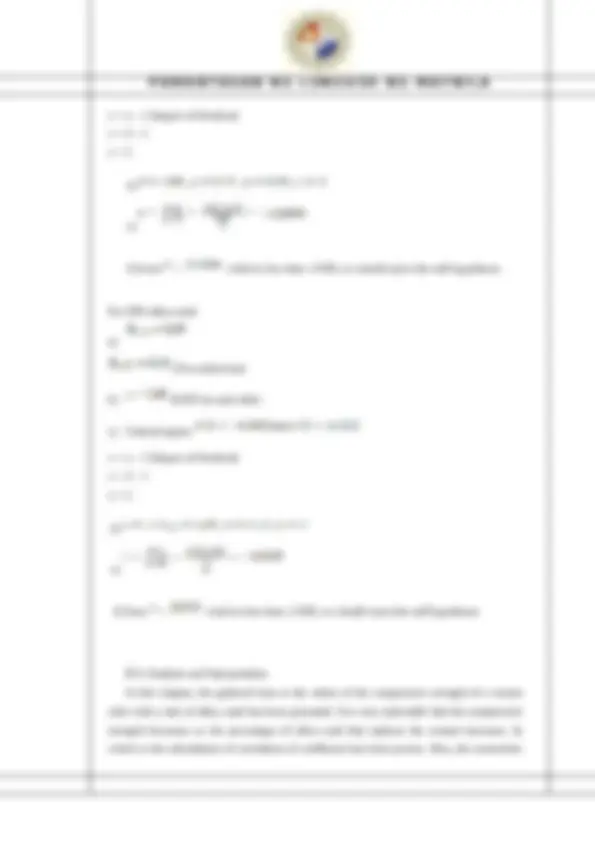
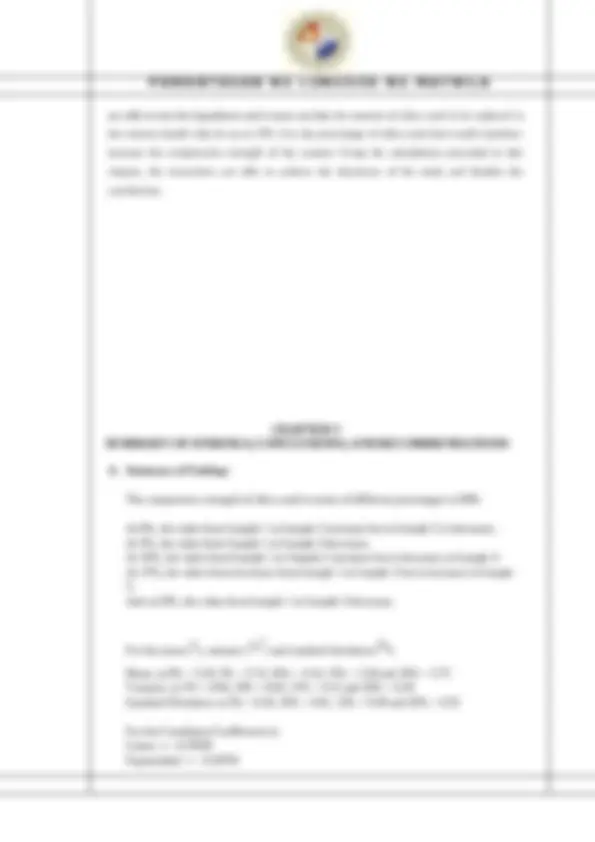
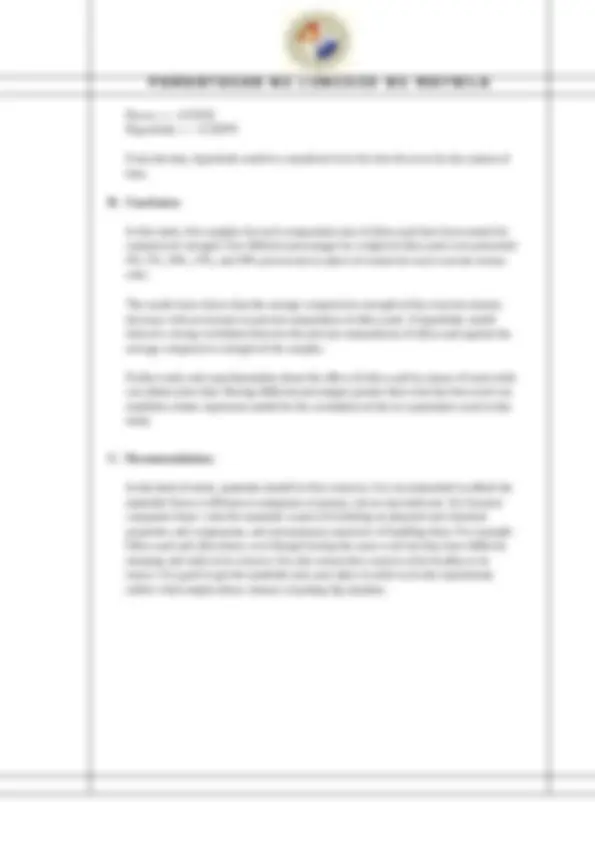
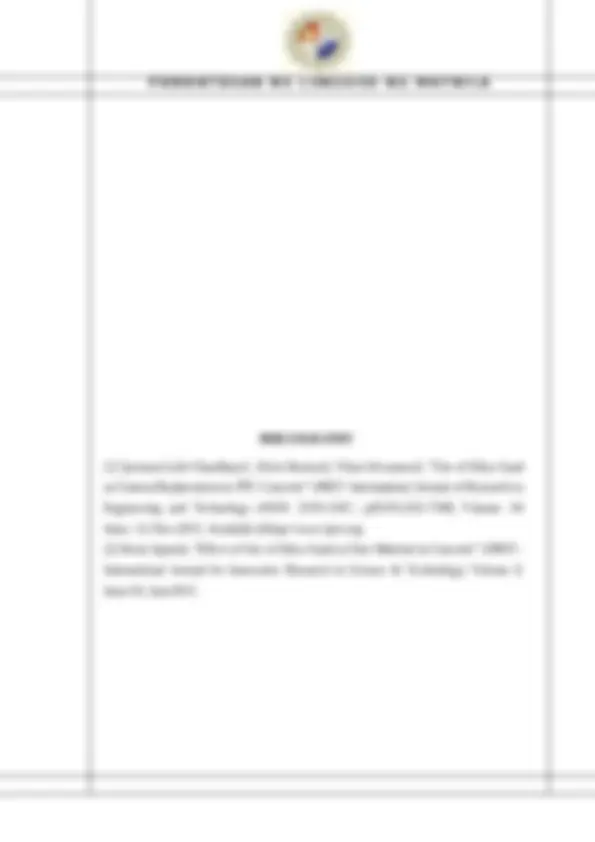
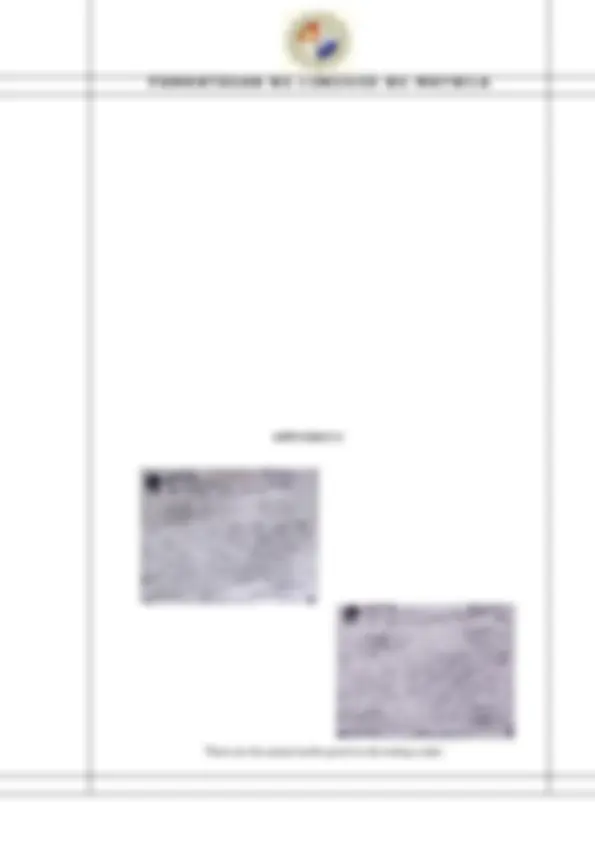
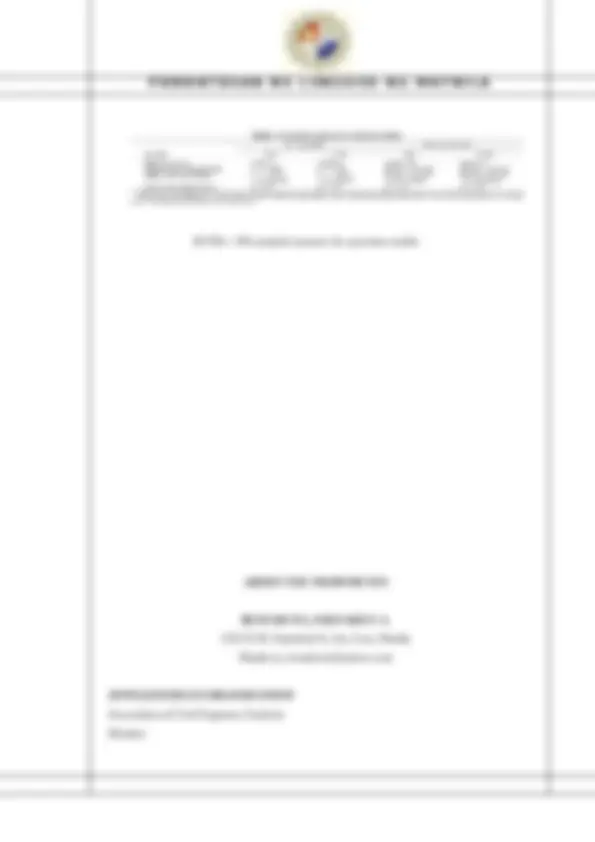
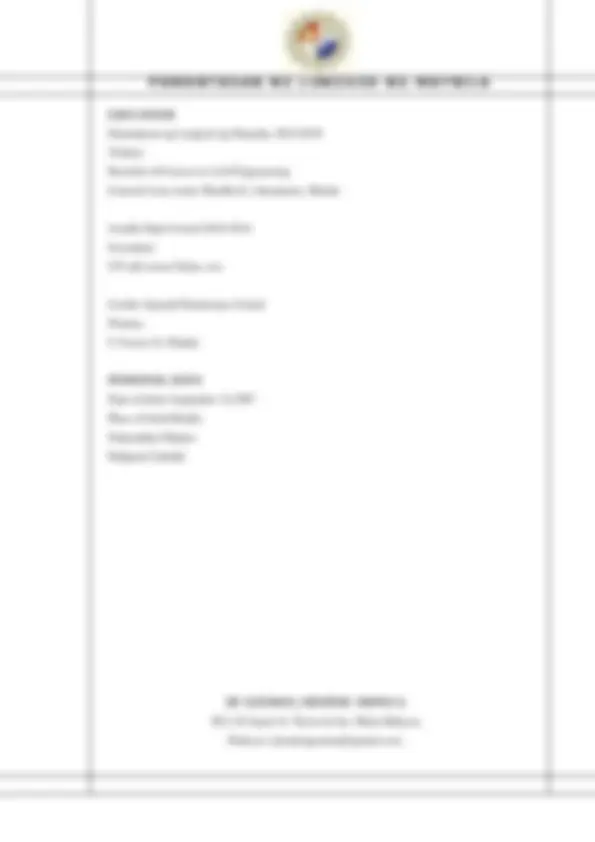
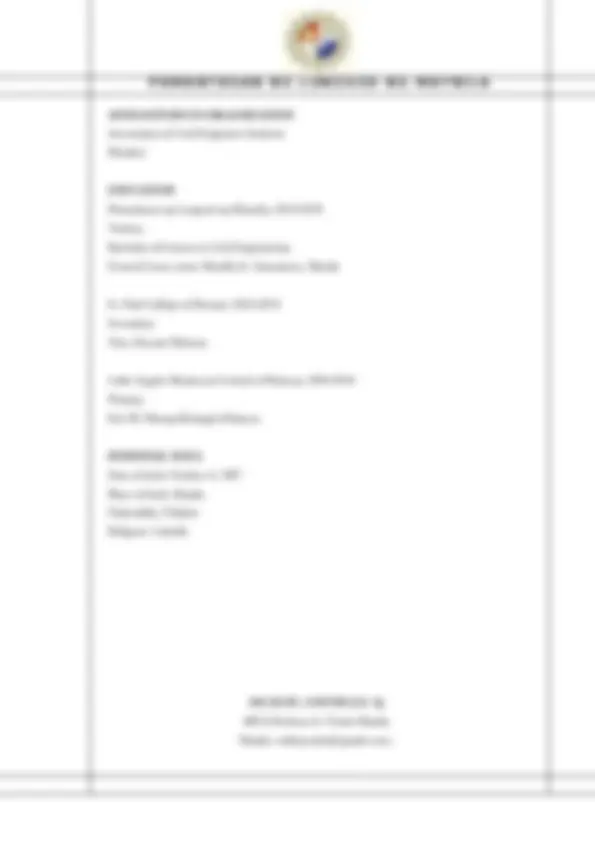
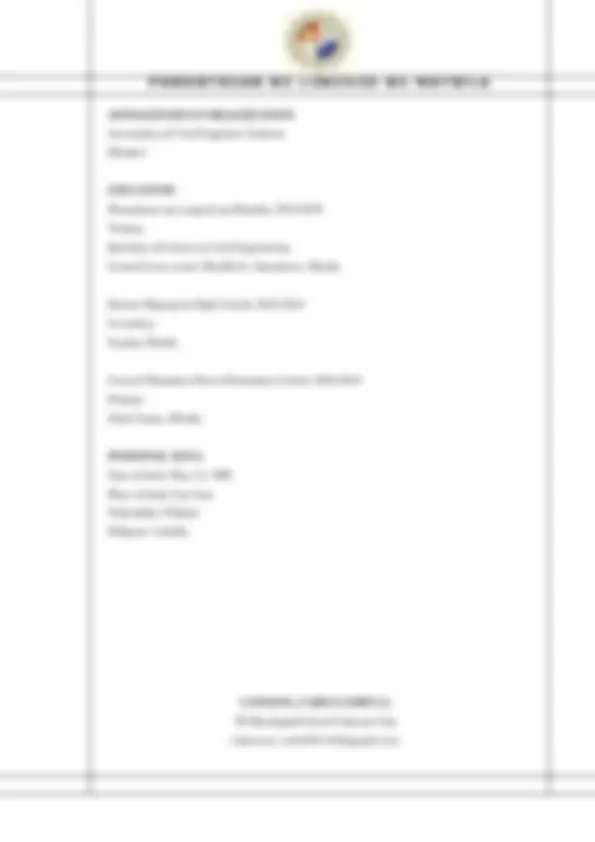
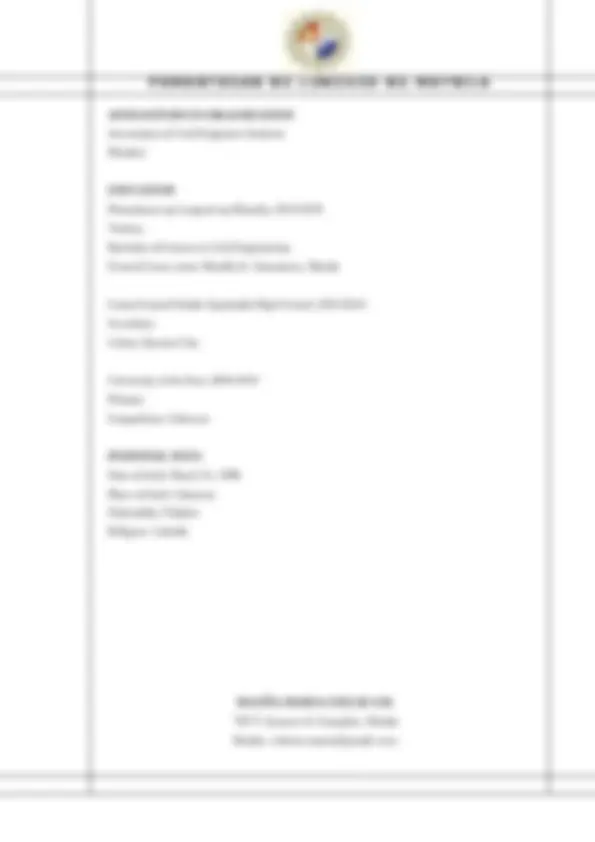
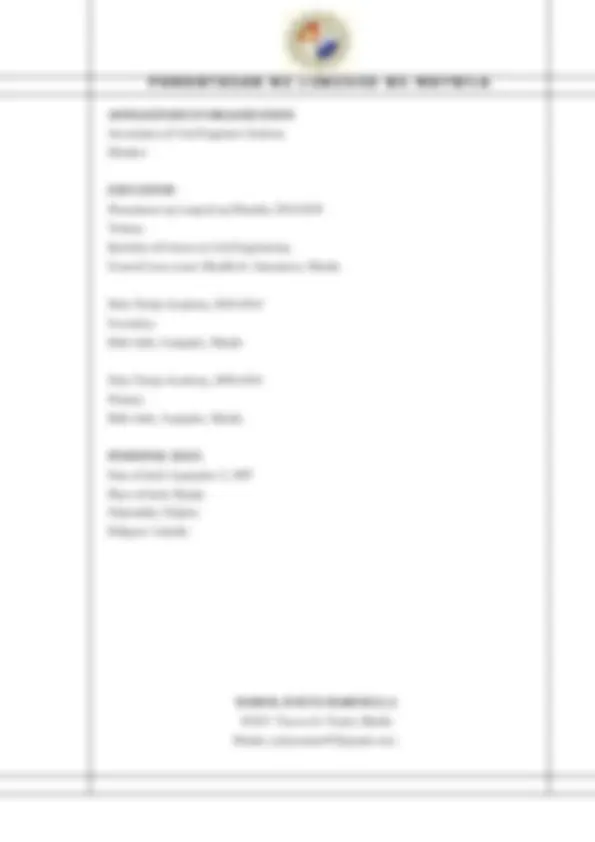
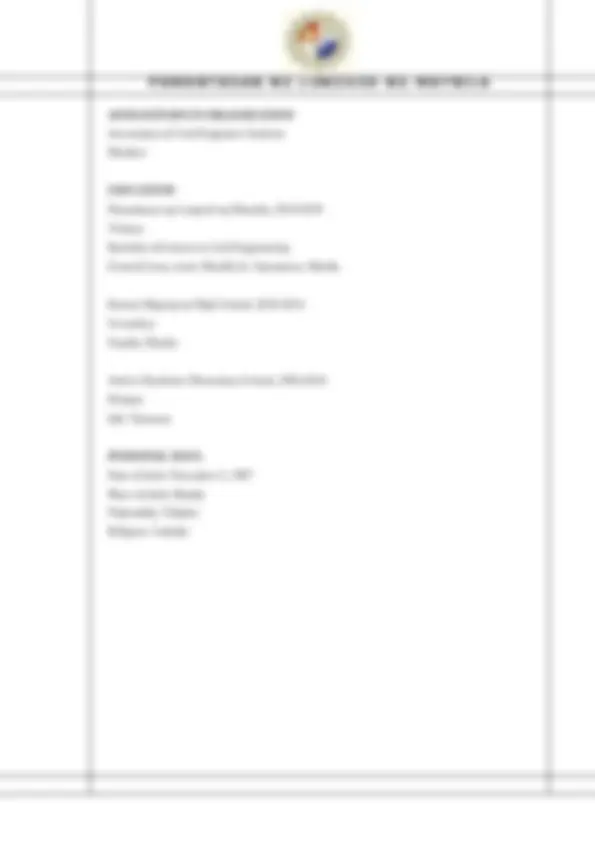


Study with the several resources on Docsity

Earn points by helping other students or get them with a premium plan


Prepare for your exams
Study with the several resources on Docsity

Earn points to download
Earn points by helping other students or get them with a premium plan
Community
Ask the community for help and clear up your study doubts
Discover the best universities in your country according to Docsity users
Free resources
Download our free guides on studying techniques, anxiety management strategies, and thesis advice from Docsity tutors
Laboratory Experiments and Reports about Silica Sand
Typology: Lab Reports
1 / 33

This page cannot be seen from the preview
Don't miss anything!


























A Case Study Presented to the Faculty of College of Engineering and Technology Pamantasan ng Lungsod ng Maynila In Partial Fulfillment of the Course ESC313 – Engineering Probability and Statistics BENEDICTO, John Rhey A. DE GUZMAN, Cristine Jhona S. JACALNE, Gwynelle Q. LANSANG, Carlo James A. MAANO, Maria Chelsea M. RAMOS, Jeslyn Marinella Bachelor of Science in Civil Engineering September 23, 2016
This study becomes a reality with the help and solicitous support of many individuals. The researchers would like to extend their sincere thanks to all of them. Foremost, they want to praise God Almighty for the wisdom He bestowed upon them, the strength, the peace of mind and good health to be able to finish this research. They would like to express their gratitude towards their family for the encouragement which helped them in completion of this paper. To their friends, block mates who share their knowledge to the researchers, thank you! To their adviser, Engr. Reynaldo Peñas for imparting his knowledge and expertise about this research. And lastly, the researchers would like to express their gratitude towards each other without one of them they wouldn’t be able to finish this case study.
B. Background of the Study A study on compressive strength model of silica sand cement mortals (2 in. x 2 in.) with different variations or amount 0%, 5%, 10%, 15%, and 20% were observed. Silica sand was used to partially replace Portland cement and the mortars were then tested for compressive strength. The results showed that the compressive strength of cement with the replacement of 5% silica sand decreased. However, when the cement was replaced by a 10% of silica sand the said property increased. And decreases when 15% of silica sand was replace but then again increases in 20% of silica sand. As the results are conducted, the researchers yielded that the amount of silica sand to be replaced in the cement should only be up to 10%. C. Statement of the Problem Silica is hard and chemically inert and has a high melting point, attributable to the strength of the bonds between the atoms. Silica sand’s strength, silicon dioxide (SiO2) contribution, and non-reactive properties make it an indispensable ingredient in the production of thousands of everyday products. So small amount of Portland cement was partially replaced by different percentage (0%, 5%, 10%, 15%, 20%) of silica sand. And the researchers would want to know the effect of silica sand to the compressive strength of cement. D. Objectives
1.1 To know the effect of silica sand to the compressive strength of the cement.
cement.
cement (0%, 5%, 10%, 15%, 20%) E. Scope and Limitations The researchers wanted to know if there’s an alternative way to reduce the consumption of cement which causes a high number of CO2 in the environment. Since the use of cement is inevitable, the researchers came up with the idea of replacing an amount of cement in a concrete with silica sand.
The study will only focus on the characteristics of silica sand which can help to increase the properties of cement such as compressive strength. And to assimilate the possibility of use of silica sand as partial replacement of cement in concrete. F. Definitions of Terms Aggregate - a material or structure formed from a loosely compacted mass of fragments or particles. Cement - a substance used in construction that sets and hardens and can bind other materials together. Compressive strength - the resistance of a material to breaking under compression. Concrete - is a mixture of paste and aggregates, or rocks. The paste, composed of Portland cement and water, coats the surface of the fine (small) and coarse (larger) aggregates. Portland cement - cement that is manufactured from limestone and clay and that hardens under water. Silica sand - is quartz that over time, through the work of water and wind, has been broken down into tiny granules.
Topic: Silica Sand as Fine Material Silica sand is acquired from a raw material (locally available in mamuara village in Kutch district). [2] After washing the raw material, the silica sand is separated by sieve size 1.18 of raw material. From the raw material different size of silica sand are separated by different size of sieve. Sand size of 30 mesh to 80 mesh (500 micron) is used in the glass industries. Sand size 1.18mm to 600 micro can be used in making concrete mix as a substitution of fine aggregate. Concrete produced using silica sand waste as fine aggregate was studied for compressive strength. Silica sand was utilized as substitution of fine aggregate by various percentage for making concrete of M-20, with w/c ratio 0.50 & 0.45. The percentage replacement will be 0 - 70% at an interval of 10% with natural fine aggregates. For making concrete OPC-53 grade cement is used. Cubes will be casted and tested for compressive strength as well as for durability properties. Optimum replacement of silica sand can be used in structural concrete. The study was conducted to observe and learn the effect of silica sand as fine material on concrete. Results of compressive strength of silica sand are as follows: By the substitution of silica sand in concrete, the compressive strength was decreased to 30% replacement and afterwards increased up to 50% replacement after starts decreasing up to 70% replacement, compressive strength was increasing 0.22% at 50% replacement compare to normal concrete for mix – By the substitution of silica sand in concrete, the compressive strength was decreased up to 30% replacement and afterwards increased up to 50% replacement after starts decreasing up to 70% replacement, compressive strength was increasing 1.21% at 50% replacement compare to normal concrete for mix –
The review of related literature was used to further develop the study to be finished. It gave a theoretical basis for the present study and conveyed ideas that has been established on a topic. Through the information and data provided on IJRET “Use of Silica Sand as Cement Replacement in PPC Concrete” and IJIRST “Effect of Use of Silica Sand as Fine Material in Concrete”, it was observed that silica sand has the ability to become a replacement of cement on a concrete at a certain replacement level but also has the ability to diminish the compressive strength at a certain replacement level. Through this related literature, other people working in the same field were identified and the present study was put in a wider perspective as the related literature displayed other opposing views and other possible results.
There were 5 tests with 5 trials containing 0%, 5%, 10%, 15%, and 20% of silica sand. In the 1st trail, 8.25 grams of sand and 291.75 grams of cement powder were mixed. By adding a decent amount of water using a cup, it successfully made the cement and the sand look like pudding. A hammer was used to make sure that there were no large particles in order to mix the cement and the sand more easily. If the cement is now seemed to be tangible enough, it was then placed in the mortar. Something hard were used in order to push and spread the cement equally in the box to avoid getting bubbles and possibly trapped air, the cement block must be pure and doesn’t break easily. In this case, small rectangular shaped plywood was used. 5 mortars were built for each set of trials. Each set were referring to the percentage of silica sand that were replaced on cement powder, with a total of 25 mortars. Marking each mortar to its corresponding percentage of silica sand can prevent confusion.
By repeating the process to the remaining trials, this experiment lasts 6 hours. Teamwork is the key for finishing this experiment. Measurements for the remaining trials; 15 grams of silica sand, 7.8 grams of sand and 277. grams of cement powder were used for trial 2. For trial 3, 30 grams of silica sand, 7.4 sand, and 262.6 grams of cement powder were used. For trial 4, 45 grams of silica sand, 7 grams of sand, and 248 grams of cement powder were used. For trial 5, 60 grams of silica sand, 6. grams of sand, and 233.4 grams of cement powder were used. After 24 hours, checking if the cements were dry or still wet is a must. After confirming the cement was completely dry, it then cured for 7 days and after that the mortars were transported to the testing lab to test its compressive strength.
A. Presentation of Data Gathered
Compressive Strength (at Maximum load and Strength) Percentag e
Units kN MPa kN MPa kN Mpa kN MPa kN MPa Sample 1 12.83 4.82 10.02 3.97 8.14 3.15 7.07 2.97 10.64 4. Sample 2 15.64 5.89 9.80 3.64 13.32 4.95 5.29 2.20 8.89 3. Sample 3 13.42 5.15 9.54 3.62 11.30 4.32 6.41 2.56 8.38 3. Table 1 shows the results of the Compressive Strength Test conducted on each sample of mortar cube. The mortar cubes that have been tested are a mix of cement, sand and silica sand. The amount of sand in the mix is fixed while the amount of cement and silica sand varies. It varies as the cement is being replaced by the silica sand with 0%, 5%, 10%, 15%, and 20%. All the mortar cubes undergo a curing process of 7 days. The results presented under the unit of kilonewton (kN) are the maximum load applied while the results under the unit of megapascal (MPa) are the compressive strength obtained. There are 3 samples of mortar cube per percentage of silica sand that replaced the cement. Mortar Cubes having 0% of silica sand as replacement for cement obtained a compressive strength of 4.82, 5.89, and 5.15 megapascal, and the maximum load applied are 12.83, 15.64, and 13.42 kilonewton, for samples 1, 2, and 3, respectively. Mortar Cubes having 5% of silica sand as replacement for cement obtained a compressive strength of 3.97, 3.64, and 3.62 megapascal, and the maximum load applied are 10.02, 9.80, and 9.54 kilonewton, for samples 1, 2, and 3, respectively. Mortar Cubes having 10% of silica sand as replacement for cement obtained a compressive strength of 3.15, 4.95, and 4.32 megapascal, and the maximum load applied are 8.14, 13.32, and 11.3 kilonewton, for samples 1, 2, and 3, respectively. Mortar Cubes having 15% of silica sand as replacement for cement obtained a compressive strength of 2.97, 2.20, and 2.56 megapascal, and the maximum load applied are 7.07, 5.29, and 6.41 kilonewton, for samples 1, 2, and 3, respectively.
Mortar Cubes having 20% of silica sand as replacement for cement obtained a compressive strength of 4.34, 3.57, and 3.33 megapascal, and the maximum load applied are 10.64, 8.89, and 8.38 kilonewton, for samples 1, 2, and 3, respectively. B. Computation B.1. Descriptive Statistics
% of Silica Sand Parameters (in MPa) Mean ( ) Variance ( ) Standard Deviation ( ) 0 5.29 - - 5 3.74 0.04 0. 10 4.14 0.83 0. 15 2.58 0.15 0. 20 3.75 0.28 0.
Parameter Formula Mean or Average Variance Standard Deviation Table 2.1 shows the calculated Mean, Variance, and Standard Deviation for the data gathered, or the values of compressive strength, as per percentage of silica sand in the mortar cube. Table 2.2 presents the formulas that have been used to calculate the parameters. With the use of the formula for mean or average, the data obtained were 5.29, 3.74, 4.14, 2.58, and 3.75, for 0%, 5%, 10%, 15%, and 20% of silica sand, respectively. With the use of the formula for variance, the data obtained were 0.04, 0.83, 0.15, and 0.28, for 5%, 10%, 15%, and 20% of silica sand, respectively. With the use of the formula for standard deviation, the data obtained were 0.20, 0.91, 0.39, and 0.53, for 5%, 10%, 15%, and 20% of silica sand, respectively. B.2. Regression and Correlation
Mathematical Pearson Product Moment
Figure 2 Figure 3
Figure 4 Figure 5 B.3. Testing of Hypothesis For 5% silica sand: a) (Two-sided test) b) (0.025 on each side) c) Critical region: v = n – 1 (degree of freedom)